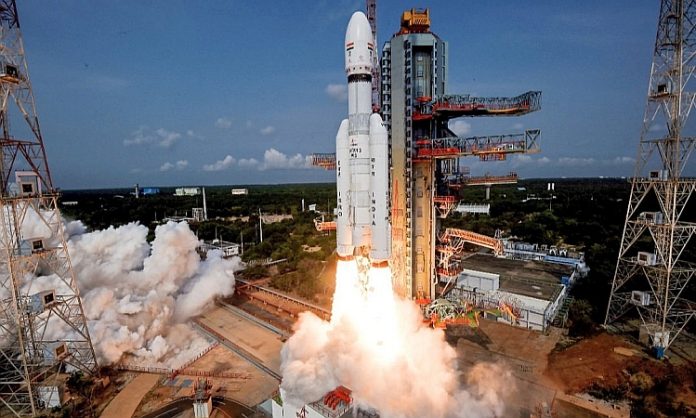Bangalore: The Indian Space Research Organisation (ISRO) has announced the schedule for much-anticipated lunar mission, Chandryaan-3, stating that the rocket will lift off at 2.30pm on July 13.
It will be another milestone in space tech development when India will launch the third venture to the moon, following the successful yet bittersweet Chandrayaan-2 mission in 2019. While the previous mission managed to orbit the moon, the Vikram lander suffered a hard landing that prevented the rover from being deployed as planned.
Also Read: ISRO places Indian navigation satellite in geo stationary orbit
Scientists at ISRO exuded confidence about success of the mission. The Chandrayaan-3 mission is expected to further deepen our understanding of the moon, with its main objective being to demonstrate the ability to soft-land on the lunar surface and operate a robotic rover.
The launch is set to take place at the Satish Dhawan Space Center in Sriharikota, India, using a GSLV Mark 3 heavy-lift launch vehicle. The mission has been budgeted at ₹ 615 crore.
Officials said that Chandrayaan-3 has undergone rigorous testing and validation processes to mitigate risks and ensure a successful mission. The mission design, including the lunar payload configuration, has been optimized based on lessons learned from the previous mission.
Also Read: After OneWeb launch, ISRO eyes solar & lunar missions next year
Learning from the last year’s failure, the ISRO has taken significant strides to ensure the success of the mission. The Chandrayaan-3 mission will include a lander and a rover similar to Chandrayaan-2 but will not carry an orbiter. The propulsion module, designed to behave like a communications relay satellite, will carry the lander and rover until the spacecraft is in a 100 km lunar orbit.
ISRO officials said the Spectro-polarimetry of Habitable Planet Earth (SHAPE) has been added to as payload on Chandrayaan-3. This equipment will study the spectral and polarimetric measurements of Earth from the lunar orbit, offering scientists valuable data about our home planet.
Also Read: ISRO conducts autonomous landing of reusable launch vehicle
There are three primary objectives for the Chandrayaan-3 mission: to achieve a safe and soft landing on the Moon, demonstrate the rover’s loitering capabilities on the lunar surface, and conduct in-situ scientific observations. The mission aims to explore the chemical and natural elements, soil, and water available on the lunar surface to improve understanding of the Moon’s composition.
Experts in space exploration said that the mission is significant not only for India but also for the global scientific community. It builds upon the knowledge gained from the previous missions and strengthens the capabilities required for future lunar and interplanetary explorations.




